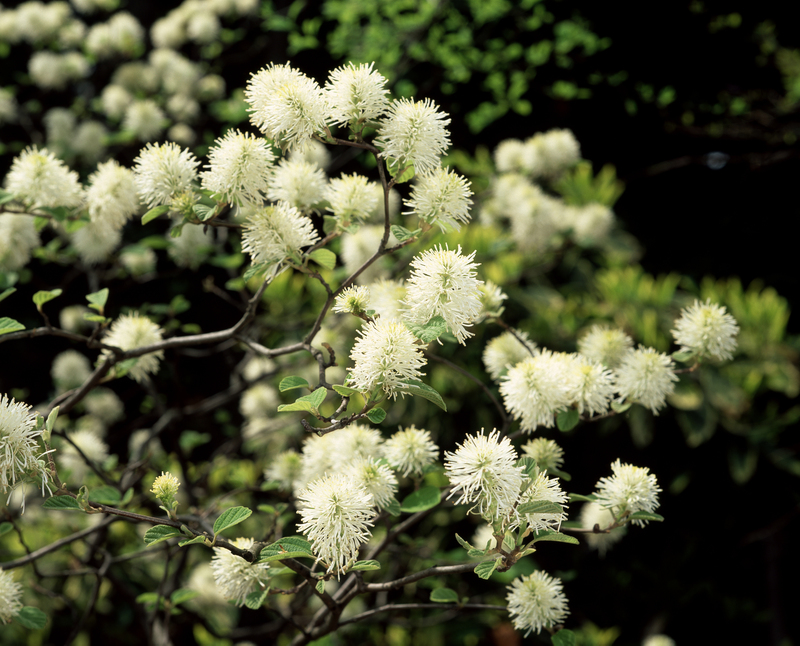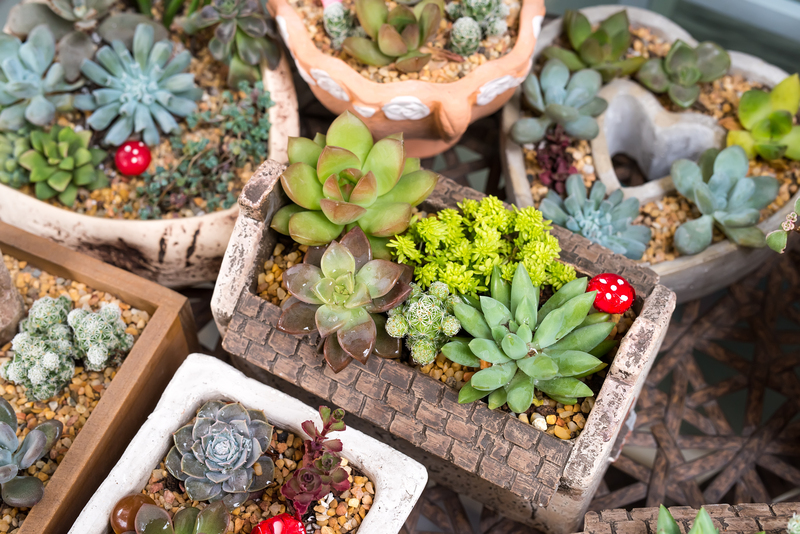Gardening with Dogs: Sustainable Practices
Posted on 23/09/2025
Gardening with Dogs: Sustainable Practices for Pet-Friendly Landscapes
Gardening is a rewarding hobby that connects us with nature, enhances our landscapes, and promotes environmental stewardship. For dog owners, integrating their canine companions into outdoor spaces adds a dynamic layer of fun and responsibility. Gardening with dogs can be fulfilling, but it does come with unique challenges, especially when striving for a garden that's both sustainable and pet-friendly.
Whether you have an energetic puppy eager to explore or a senior dog that lounges under the trees, designing and maintaining a sustainable garden that works for your four-legged friend is possible. This comprehensive guide will walk you through proven techniques, helpful tips, and sustainable practices for creating a garden that's safe for dogs, environmentally responsible, and a joy for the whole family.

Why Sustainability Matters in Dog-Friendly Gardening
Sustainable gardening is all about nurturing your outdoor space in harmony with nature. This approach values resource conservation, minimizes chemical use, supports local biodiversity, and builds resilient ecosystems. When you add a dog into the mix, sustainability becomes even more important. Dogs can unknowingly stress the environment with their digging, urine spots, and high-energy play. Combining sustainable gardening practices with pet-friendly designs helps reduce environmental impact while keeping your furry friend happy and healthy.
- Lowers chemical exposure for your pet and local wildlife
- Conserves water in play areas frequented by dogs
- Reduces maintenance and garden waste
- Encourages biodiversity for a richer, more resilient ecosystem
- Provides enrichment for your dog in a safe environment
Creating a Dog-Friendly & Sustainable Garden Design
1. Zoning Your Space with Dogs in Mind
One of the keys to sustainable gardening with dogs is smart spatial planning. By designating zones for different purposes, you can balance your dog's needs with your own gardening goals. Consider:
- Active play zones: Areas where your dog can run, dig, and play. Use durable, eco-friendly groundcovers like clover or buffalo grass.
- Rest & shade zones: Shaded spots with soft mulch or grass where dogs can relax on hot days.
- Plant protection zones: Raised beds or fenced areas for delicate or edible plants out of canine reach.
2. Selecting Dog-Safe and Eco-Friendly Plants
Plants are the heart of any garden, but pet owners must be mindful to avoid species toxic to dogs. Many beautiful, native plants are naturally drought-resistant and pose no danger to pets. Try to use dog-safe plants that require minimal inputs and provide habitat for pollinators.
Examples of Non-Toxic, Low-Maintenance Plants:
- Herbs: Basil, thyme, sage, and rosemary (avoid mint as it can be invasive).
- Perennials: Sunflowers, marigolds, coneflowers, snapdragons.
- Groundcovers: Clover, creeping thyme, Irish moss.
- Shrubs: Bottlebrush, camellias, beautyberry.
Always consult an up-to-date list of toxic and non-toxic plants for dogs from trusted sources like the ASPCA before purchasing.
3. Sustainable Lawn Alternatives for Dog Owners
Traditional lawns can be water-hungry, pesticide-dependent, and susceptible to dog urine damage. Instead, try these sustainable alternatives:
- Clover lawns: Drought-resistant, self-healing, and soft for play.
- Tall fescue turf: More urine-resistant and needs less water than Kentucky bluegrass.
- Native grasses: Adapted to local climates, reducing the need for irrigation and fertilizers.
- Mulched paths: Cedar or cypress mulch (avoid cocoa mulch, as it is toxic to dogs) for pathways and play areas.
Eco-Friendly Dog Waste Management
Responsible dog waste management is crucial for protecting your garden and the broader ecosystem. Dog waste contains nutrients and pathogens that can contaminate water sources and damage plant health if left unchecked.
Composting Dog Waste
While traditional compost bins are not suitable for dog waste due to potential pathogens, there are specialized in-ground dog waste composters available. These devices use enzymes and natural processes to safely break down pet waste far below the surface, away from edible plants.
- Choose a spot away from vegetable beds and water sources
- Follow product guidelines for safe, effective decomposition
Sustainable Disposal Options
Other eco-friendly dog waste practices include:
- Biodegradable bags: Opt for cornstarch-based waste bags instead of plastic.
- Flushable systems: In some cities, dog waste can be flushed down the toilet, bypassing landfill.
- Local pickup services: Some municipalities offer organic collection that includes pet waste.
Reducing Chemical Use: More Important When Gardening with Dogs
Dogs spend more time close to the ground, sniffing, digging, and sometimes eating garden plants and soils. This means any chemicals used in your landscape have a direct pathway into your dog's system. Sustainable gardening with dogs means minimizing or outright eliminating the use of synthetic fertilizers, pesticides, and herbicides. Here's how:
- Practice organic gardening: Use compost, mulch, and organic amendments instead of synthetic chemicals.
- Hand weeding and mulching: These suppress weeds naturally without chemicals.
- Encourage beneficial insects: Ladybugs, lacewings, and predatory beetles can help control harmful pests.
- Integrated Pest Management (IPM): A holistic approach that combines physical, biological, and minimal chemical methods for sustainable pest control.
Never use cocoa mulch in your garden--it contains theobromine, a substance highly toxic to dogs even in small amounts.
Water Conservation in Dog-Friendly Gardens
Garden irrigation is a significant source of water use in most homes, but sustainable dog-friendly gardens can help conserve water while keeping your canine cool and hydrated.
Low Water Gardening Techniques
- Drip irrigation: Delivers water directly to plant roots, minimizing evaporation and runoff from paw traffic.
- Mulching: Mulch conserves moisture, stabilizes soil temperature, and reduces erosion in high-traffic areas.
- Rain barrels: Collect rainwater for use on ornamental beds (avoid watering edibles with dog play area greywater).
Water Features for Dogs
A shallow pond, fountain, or doggie splash zone is both fun for pets and may support biodiversity. Use native aquatic plants and ensure any water feature is filtered and easy to clean, as dogs may jump in and drink from it.
Eco-Conscious Hardscaping & Structures
Physical structures--paths, fences, dog runs, or agility equipment--can help protect plants and manage canine energy. However, when gardening with dogs, it's important to choose materials that are safe, durable, and eco-friendly.
- Permeable pavers: Allow rainwater to recharge the ground below, reducing runoff and creating cool surfaces for paws.
- Recycled materials: Reuse bricks, logs, or composite lumber for borders and agility equipment.
- Living fences: Rows of tough, non-toxic shrubs provide safe, attractive barriers and habitat for wildlife.
Enrichment and Environmental Benefits for Dogs
Natural Enrichment in the Sustainable Garden
Dogs thrive when their environments are stimulating. Gardening with dogs provides excellent opportunities for natural enrichment:
- Scent gardens: Planting dog-safe aromatic herbs and flowers encourages healthy sniffing and exploration.
- Dig zones: Designate a corner for natural digging using sand or loose earth, reducing damage elsewhere.
- Tunnels and structures: Use willow tunnels or log piles for hide-and-seek games and hideouts.
- Safe edible plants: Berries or certain greens (check for dog safety) offer occasional treats and foraging.
Benefits of Sustainable Gardening for Dogs and Owners
- Physical health: Dogs get fresh air and exercise in a safe, pesticide-free environment.
- Mental stimulation: Natural features and changing seasons keep dogs curious and engaged.
- Bonding time: Gardening becomes a shared, positive activity for both pets and people.
- Lower vet bills: Reducing toxins and eating safe plants means fewer accidental poisonings.
- Greater environmental stewardship: Set an example in your community for sustainable, responsible pet ownership.
Dog-Safe Organic Pest Controls and Amendments
Sustainable gardening for dog owners requires using pet-friendly alternatives for soil and pest issues:
- Diatomaceous earth: Non-toxic to dogs (when food-grade) and controls crawling insects.
- Neem oil: A natural pesticide, safe for most dogs if used as directed and allowed to dry before play.
- Homemade barriers: Crushed eggshells, copper tape for slugs and snails, or vinegar sprays for weeds.
- Green manure and compost: Nourish soils without synthetic chemicals harmful to pets.
Tip: Always test organic pest control products in a small area first and check that your dog does not react or seek to ingest them. While safe, large quantities of some substances can still be harmful.

Teaching Dogs Garden Respect and Good Behavior
Even the best sustainable dog-friendly garden needs clear boundaries and positive dog training. For a harmonious space:
- Teach "leave it" and "off" commands: Prevents eating harmful plants or trampling sensitive beds.
- Reward calm garden behaviors: Treats and praise for sniffing, not digging, in garden beds.
- Supervise puppy play: Young dogs are naturally curious and may need extra guidance in the garden.
- Reinforce desired trails and paths: Use treats to encourage using designated dog paths.
Combining sustainable garden design with consistent training helps ensure your outdoor space stays beautiful and functional for years to come.
Conclusion: Cultivating a Sustainable Garden with Dogs
Sustainable gardening with dogs is a win for people, pets, and the planet. By choosing eco-friendly materials, non-toxic plants, and responsible pest control and waste management practices, you create a safe, vibrant yard that supports both your dog's well-being and ecological health. Remember, every garden is unique--adapt these suggestions as needed for your dog's breed, size, and habits, and enjoy the process of co-creating a thriving, earth-friendly haven.
Ready to get started? Begin with small changes--a dog-safe plant swap here, a composting system there--and enjoy watching your sustainable, pet-friendly garden bloom.
Further Resources
- ASPCA - Toxic and Non-toxic Plants for Dogs
- Audubon Native Plant Database
- Gardener's Supply Company: Gardening with Dogs
- EPA: Healthy Pets, Healthy Environment
Gardening with dogs using sustainable practices is more than a trend--it's a responsible, joyful way to nurture your yard, your pet, and the world around you.

